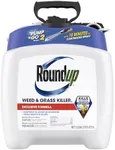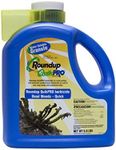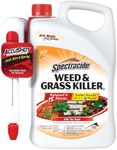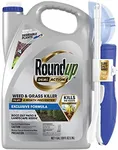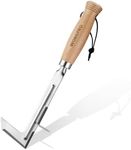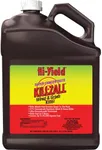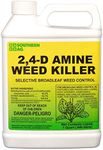Buying Guide for the Best Weed Killers
Choosing the right weed killer can make gardening or lawn care much easier and more effective. There are many different products on the market, each designed for specific types of weeds, environments, and usage preferences. Before you buy, it's important to understand what type of weeds you're dealing with, where you'll be applying the weed killer, and if there are any plants nearby you want to protect. Always take into account the safety of pets, children, and the environment around your target area. Making an informed choice ensures that you get the results you want without causing unintended harm.Type (Selective vs. Non-Selective)The 'type' of weed killer refers to whether it targets only certain plants (selective) or kills most plants it contacts (non-selective). Selective weed killers are designed to remove specific weeds without damaging desirable plants like grass, making them great for lawns and gardens. Non-selective types kill nearly all plants, so they're best used in areas like driveways or patios where you don't want anything to grow. To choose the right type, consider what you want to protect and what you want to remove. If you're working in a garden or lawn, selective is often the way to go. For hard surfaces or total clearance, non-selective works best.
Application MethodWeed killers come in several forms—ready-to-use sprays, concentrates to be diluted, or granular types. Ready-to-use sprays are convenient for spot treatments, easy for beginners, and require no mixing. Concentrates need to be mixed with water and are typically used for treating larger areas; they offer more value for covering big spaces but require some care in mixing. Granular products are sprinkled directly on the soil and watered in, often used for prevention or in garden beds. Picking the right method depends on your comfort level, treatment area size, and the type of application you prefer.
Systemic vs. ContactSystemic weed killers are absorbed through the leaves and travel throughout the plant to kill roots as well as above-ground parts. Contact weed killers only kill the parts they touch, so they're better for quick results on small, annual weeds. Systemics are more effective against deep-rooted, perennial weeds that keep coming back. Your choice depends on whether you're dealing with tough, recurring weeds or just want to handle surface growth. For long-term control, systemics are generally a better fit; for fast results on easy-to-kill weeds, contact types work well.
Residual EffectThis refers to how long the weed killer lingers in the soil and continues to work after application. Some products break down quickly, making them safe to use around desired plants soon after application. Others have a lasting effect, preventing new weeds for weeks or months, but this means you need to wait longer before planting anything new in that area. If you plan to replant soon, opt for a product with a short residual effect; if you want long-lasting weed prevention, choose one with extended soil activity.
Target Weed TypeSome weed killers are designed to work best against certain weed types—like broadleaf, grassy, or woody weeds. Understanding what types of weeds you have helps you pick a product that is formulated for maximum effectiveness. Check the product label or description to see which weeds it targets. If you have mostly dandelions, clover, or lawn weeds, a broadleaf formula is effective. For unwanted grasses or tough vines, look for a weed killer suited for those specific types.
Safety and Environmental ImpactSafety is crucial, especially if you have children, pets, or nearby water sources. Some weed killers are safer for use around people and animals, while others require keeping the area clear until the product dries or breaks down. Environmental impact varies too—some break down quickly and leave little residue, others can harm beneficial bugs, soil life, or pollute water if misused. Always read labels, follow guidelines, and choose a formula that aligns with your safety priorities and local environmental considerations.


